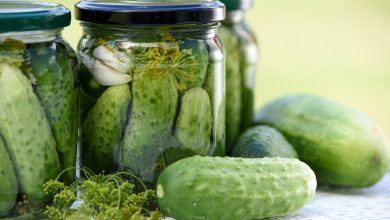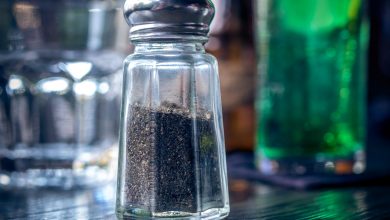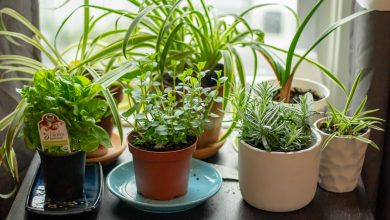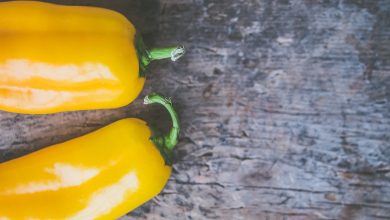Vegetable Gardening 101: How to Grow Spinach In A Pot
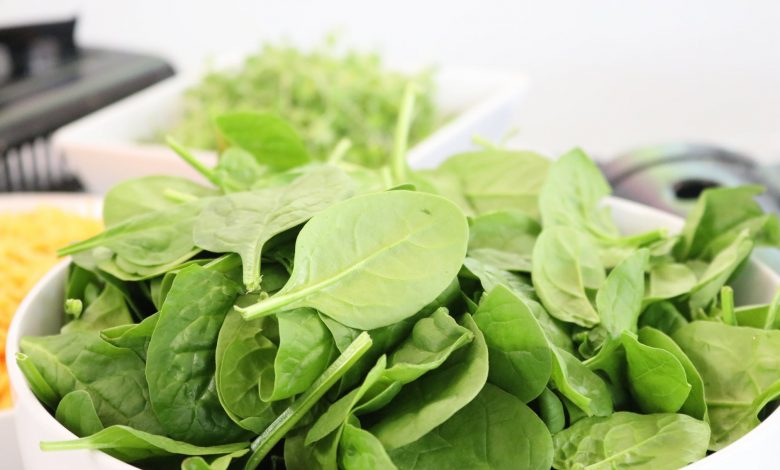
Spinach is the vegetable that kids hate and adults love, especially if your name is Popeye.
There’s nothing better than mixing a little bit of spinach in your salad to complement your meal on a hot summer night. Unfortunately, spinach from the grocery store can be expensive, and it may not last nearly as long as you would like. And let’s face it, we all know fresh spinach tastes way better than anything you can get at a grocery store.
Wouldn’t it be nice to have spinach whenever you wanted it? How great would it be just to clip a couple of leaves to make your salad and enjoy your meal? Luckily, spinach is one of those rare vegetables that love to grow in a pot. No giant garden or green thumb required. Seriously, anyone can grow spinach! It doesn’t require a ton of sunlight or much space, and it is quite adaptable to various temperatures and water levels. It is the perfect vegetable for any home or apartment owner that has a desire to add a healthy superfood to their diet.
So let’s dive in and see what we need to do to make our spinach growing experience the best one ever.
Picking Out The Right Spinach For Your Needs
When it comes to growing spinach, you need to know what the best type of spinach is for your environment and taste buds.
Believe it or not, there are several varieties of spinach, all with a varying degree of attributes. Some are more resistant to pests and diseases, while others are hardy and can endure colder temperatures. At the same time, some spinach leaves are super wrinkly, while others are almost entirely flat.
Of course, there is a difference in taste, as well. Some may be a little bitter, while others have a more earthy flavor to them. Adding to this tough decision is how you plan to use it. Some varieties of spinach are excellent for salads, while others are great to saute. Who knew that the spinach world was so diverse?
When choosing the best spinach for you, it’s essential to understand the environment you live in, the conditions you’ll be growing your spinach in, and your tastes.

Here are a few of the more popular spinach varieties.
Savoy
This is the ideal spinach for people who live in colder climates. This particular spinach variety tends to produce quite slowly in early summer; however, as fall approaches, this type of spinach will continue to grow for a more extended period.
It is more resistant to colder temperatures than other varieties of spinach, so if you live in the north and want to plant your spinach outside, savoy spinach might be the one for you.
Flat-Leafed
Flat-leafed spinach is likely the kind of spinach you’re most familiar with, as you will often find this wrinkle-free spinach leaf at your local grocery store.
One of the more common species of flat-leaf spinach is the red cardinal spinach. It has the typical spinach taste and is perfect for salads or adding to green smoothies.
Semi-Savoy
If you’re looking for the most popular type of spinach to grow at home, then look no further than the semi savoy.
This variety of spinach tends to produce more heavily throughout the year, and as a bonus, it is quite resistant to diseases. Typically semi-savoy spinach will have fewer wrinkles and tends to grow higher off the ground, making it much easier to clean the spinach leaves.
If you’re looking for an easy to grow variety of spinach, then the semi-savoy is likely the best option for you.
Alternatives to Spinach
Typically, true spinach doesn’t grow all that well during the hot summer months. Luckily these two alternatives love the summer. These are the New Zealand spinach, which is typically excellent in salads, and the Malabar spinach, which is fantastic for stir fry or to saute.
No matter what type of spinach or alternative you are trying to grow, the following tips will help make sure you have a bountiful harvest.

Choosing the Right Pot
It all starts with the pot. Selecting the wrong pot will make for a challenging growing season, so choose wisely. You will want to find a container that is at least six to eight inches deep.
With that said, the width of the planter is far more important than the depth, as spinach tends to grow outwards. Having a wider pot will ensure that your spinach has plenty of room to grow so you will have plenty of leaves to pick all season long.
At the same time, you don’t have to use one large planter. If you prefer, you can use multiple small pots. All you need to do is plant one seed in each cup.
Using the Proper Soil
After you get the right planter, you need to make sure you fill it with the proper soil. You will want the potting soil to be high in organic matter and be loamy and crumbly, as it is best for growing spinach. It is also vital to have soil that drains well because, if the dirt gets clogged up and retains water, it could drown your spinach plant.
Finally, you will want to make sure that your soil has a neutral pH, which is somewhere in the vicinity of seven.
Planting the Seeds
Now that you have everything in order with the correct planter and the perfect soil, it is time to start planting your seeds. At this point, you will be able to get your hands dirty, so the seed planting stage is where the fun begins.
Not to dampen that fun, but there are still a few key things you need to keep in mind when planting your spinach seeds.
Starting in Seed Trays
You don’t need to plant your spinach seeds in your larger pot right from the beginning. You can use seed trays to start the seedlings before transplanting them to their permanent home.
Typically, seedlings will germinate in 5 to 14 days. It all depends on the variety of spinach and the growing conditions in your area.
If you have decided to grow your seeds in a seed tray, make sure you wait until there are at least two to three real leaves sprouting from the soil before transplanting them into a larger pot.
Depth of Seeds
Regardless if you use seed trays or you plant them directly in your main pot, you will want to make sure that the seeds are at least a half-inch deep.
Covering your seeds with at least a half-inch of soil will ensure that your seeds get the nutrients they require so that they can grow into healthy, high-producing spinach plants.
Spacing
The spacing of your seeds is critical in ensuring that each spinach plant has plenty of room to grow. Spinach tends to grow outwards and, as such, requires more space in the planter than many other vegetables.
You will want to make sure that you have at least three inches of space around each spinach seed. With that said, if you would like to have larger spinach leaves, then give your plants at least five inches of space around each seed.
A good trick is to divide your planter or pot into squares and determine how many seedlings you’ll be able to plant within the confines of that planter.

Outdoor Growing
If you have space in your yard, it may be a great idea to make a larger planter so that you can grow your spinach outdoors. Growing outside will give your spinach more than enough room to stretch out and produce more leaves for your delicious salads.
Growing spinach outdoors will bring its challenges, though, such as harmful pests, extreme temperatures, and bright sunlight. As mentioned earlier, spinach is a relatively hardy vegetable, which makes growing it outside a little easier; however, there are still a few things you need to consider when growing spinach outdoors.
Temperature
For the most part, the temperature doesn’t have the most significant effect on spinach. Spinach has been known to grow in temperatures as low as 40 degrees Fahrenheit and also in temperatures as high as 90 degrees Fahrenheit. The ideal temperature for spinach is between 50 and 80 degrees Fahrenheit.
Depending on where you live, you may want to consider the typical temperature from spring through fall. Planting spinach in Death Valley may not be your best bet. In this case, you may want to take your spinach indoors.
Position
The position of your planter is also critical. If you’re growing spinach during the autumn months, then you’re going to want to keep your spinach in a sunny spot due to the shorter days and the lower intensity of the sun.
If you’re planting your spinach in the spring or summer, then you will want to try to find areas that will get some shade throughout the day. Spinach plants need to have a little bit of shade during the afternoon hours. If the temperature gets too hot, it could impact the quality of your spinach yield. With that said, you don’t want it to be shady all the time either, as your spinach will appreciate the sun during the morning and evenings.
Watering
Similar to other vegetables, watering your spinach plant is an important task that needs to be thought through carefully. Overwatering spinach could lead to stagnant water, which will result in rot or possible fungal diseases. Neither of these are ideal situations, so try to keep the soil damp but not soggy or too wet.
There isn’t a set amount of times that you should be watering your spinach plant, but it is essential to make sure that you dampen the soil whenever you notice it is dry. Letting the soil dry out for too long will impact the health of your spinach plants.

Indoor Growing
If you would prefer to grow your spinach indoors, you’ll be happy to know that this is a real possibility. Spinach does not require much sunlight; it is possible to grow them on your windowsill and still receive excellent yields throughout the growing season.
A good trick for growing spinach indoors is to buy several small pots that are at least six inches deep and planting one spinach seed in each container. Having several small containers will save space in your apartment, yet give you all the tasty spinach you desire.
You can see why spinach is the perfect plant for people who live in apartments or homes with little space. It really doesn’t take much room to grow this delicious vegetable.
Not to mention, having a spinach plant or two will help add a little bit of color to the room, and it is always nice having a live plant growing in the house. It just adds a little something extra to the environment.

Caring for Your Spinach
At this point, your spinach has been planted and is hopefully growing a bountiful harvest for you to consume throughout the spring, summer, and fall.
Now it is time to step up the gardening game and give your spinach a little extra boost throughout the growing season. If you want to take care of your spinach to make sure it produces at its highest yield, here are a few tricks you can implement.
Add Mulch
You may be thinking that you don’t need to add mulch. That it is just one of those luxury items that some garden plants need, right? The truth is you don’t need mulch; however, it can make all the difference in the life of your spinach plant.
Adding mulch to your spinach pot is always a great idea. It is an easy trick that will help you retain moisture inside the container, giving the spinach plant all the water it will ever need. As a result, you will see your spinach growing higher and faster in no time.
I know it may seem a little counterintuitive to use mulch to retain water when we keep talking about how important it is to ensure your soil drains effectively. In reality, the mulch will help make sure that the water drains, yet the soil stays damp enough for the spinach to soak up all the wonderful goodness that comes with watering.
Fertilizer
Nitrogen is one of the minerals that your spinach plant will crave as it starts to grow. When you first plant your spinach, you can mix a time-release fertilizer, or you can simply add a variety of compost to your planter. Using a time-release fertilizer or pure compost will ensure that the nitrogen gets slowly delivered to your spinach when it needs the most.
If you’re looking for a great organic way to help your spinach grow, then you may want to try using fish emulsion or manure tea during the middle of the growing life cycle. Your spinach will thank you by having more spinach leaves than you ever thought possible.
Pests & Insects
Oh, those “wonderful” pests that always seem to attack your vegetables a day before you get to harvest it.
Luckily if you’re growing spinach indoors, you likely won’t have too many pests attacking your precious spinach leaves. On the other hand, if your spinach is in the outside world, then you may need to keep an eye out for caterpillars, slugs, and other pests that like to eat your leaves.
Since your spinach is in a small container, it won’t be too difficult to remove the pests and control the problem. You can pick the bugs off by hand quite quickly, given the small growing area.
Make sure you are regularly checking under the leaves, as this is where many pests like to hide. If you live in an area that has a high density of insects or diseases, then you may want to consider choosing a spinach variety that is resistant to pests.

Harvesting Your Spinach
Thank goodness! It is finally that time you have been anxiously waiting for all season: It’s time to reap the rewards of all of your effort.
Generally, spinach will be ready to harvest between 37 and 50 days after initial germination. This time will depend on the variety of spinach, as well as the growing conditions.
You will need to wait until your spinach has formed at least five to six healthy leaves that are at least three to four inches long. At this point, it is safe to start harvesting leaves for your next meal.
You will always want to pick the outer leaves first so that the inner leaves can continue to grow and replace the leaves you have just harvested. Similarly, you could also cut the entire plant with a knife. The beautiful thing about spinach is it will begin to re-grow even after you cut it down.
Bolting
If you are new to the spinach world, or even the vegetable world for that matter, you may have never heard of bolting. In that case, let me be the first to introduce you to an issue that plagues gardeners all around the world.
Bolting occurs when the temperature becomes hot and humid, especially in warmer climates. You will start to notice some small yellow or green flowers appearing on your spinach plant. During this time, the spinach will begin to thicken, and its flavor profile will become more bitter.
To get the best-tasting form of your spinach, it is a good idea to harvest your plant before it starts to flower. You can also choose a spinach variety that has a longer bolting time.

That’s It!
Who would have thought that growing spinach could be so easy? If you are looking to enjoy fresh summer salads this season, then you may want to consider planting your very own spinach.
It doesn’t matter if you have the worst green thumb in the history of gardeners, you will still likely be able to get a decent harvest from your spinach. Its hardy and easy to care for nature makes this a great vegetable to grow in containers or small pots.
By now, you should know everything you need to know to grow your spinach successfully. At this point, you just have to decide what variety of spinach you are most excited to try.
Good luck with your spinach growing, and don’t forget to enjoy the taste of delicious fresh spinach all year long!
